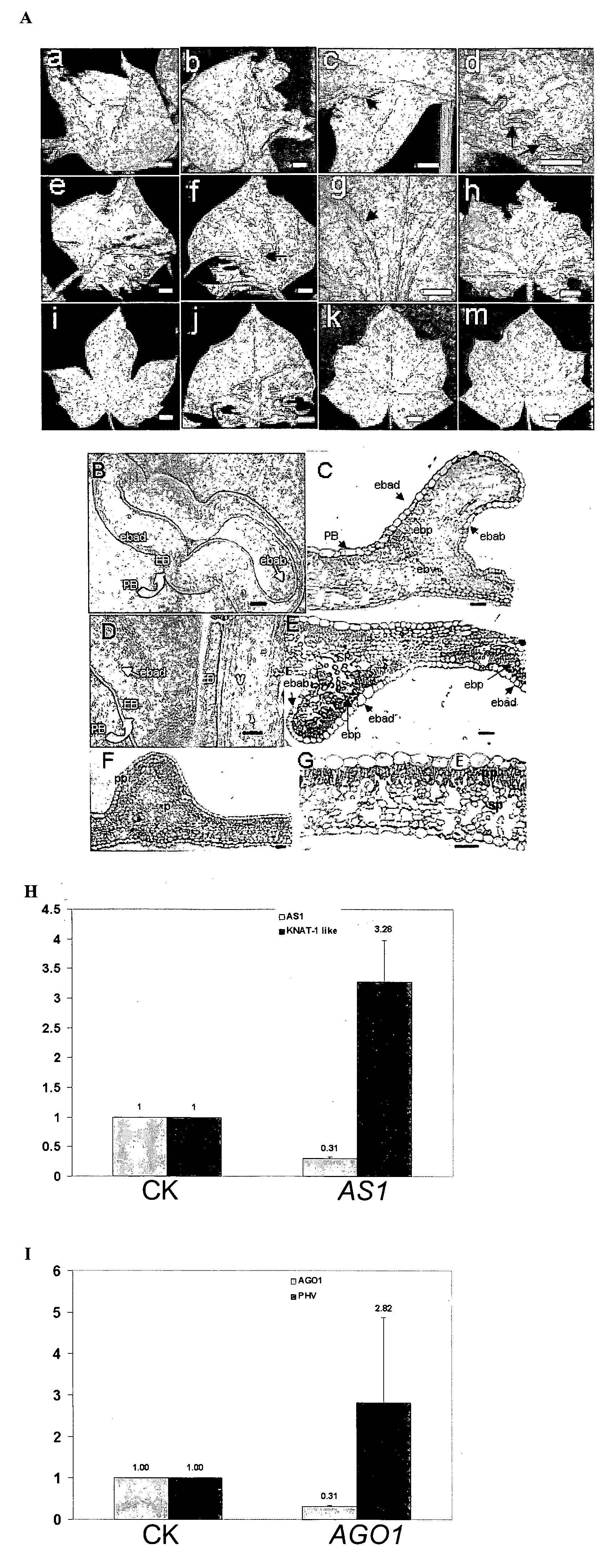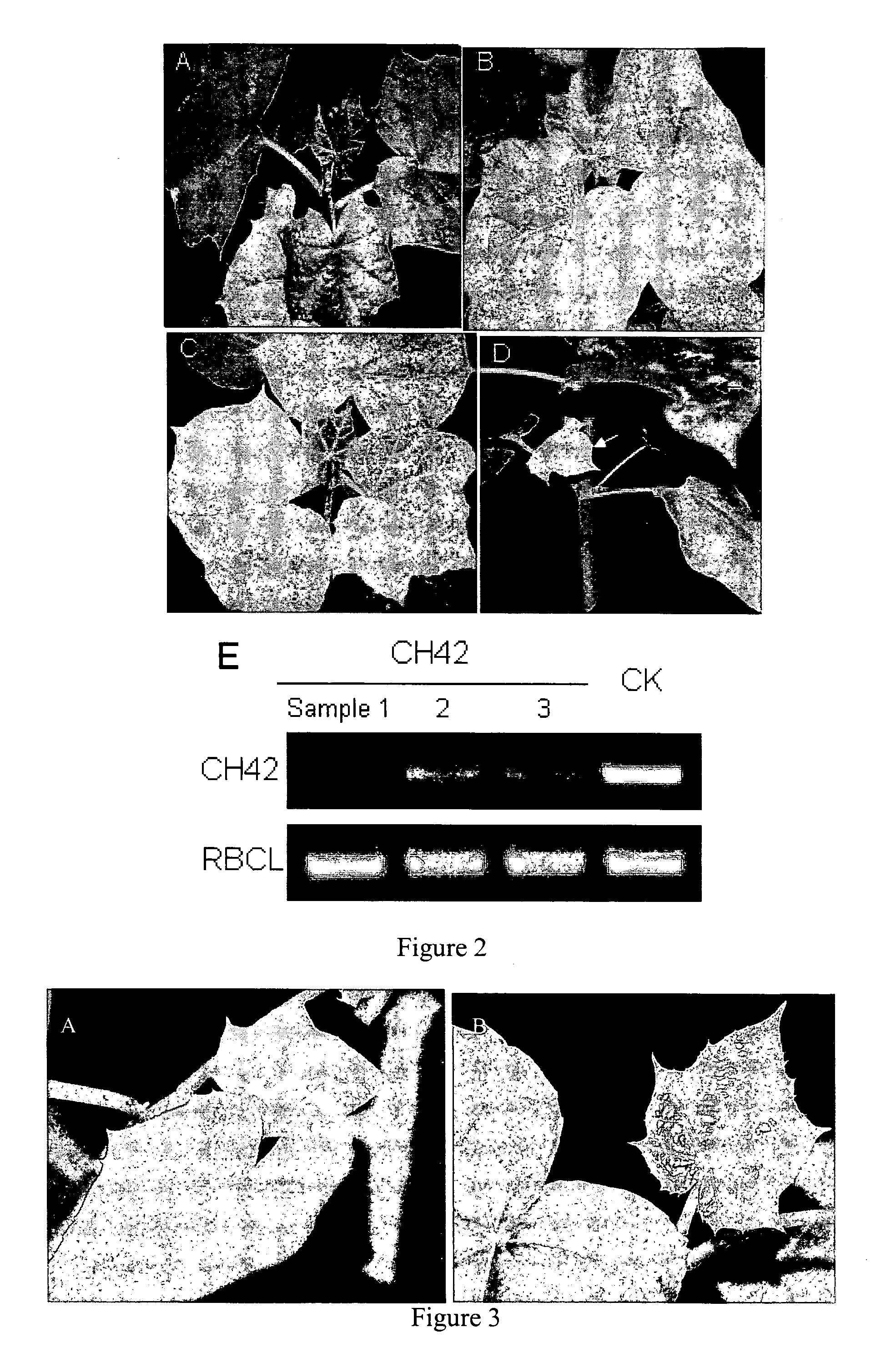Functional analysis of jatropha curcas genes
a technology of functional analysis and genomic scale, applied in the field of genomic scale functional analysis of jatropha curcas genes, can solve the problems of increasing the pressure on food production, worsening green house effect, and dwindling fossil fuel supply in the world, and achieves the effect of improving the quality of life, increasing the demand for biofuel, and reducing the supply of fossil fuel
- Summary
- Abstract
- Description
- Claims
- Application Information
AI Technical Summary
Benefits of technology
Problems solved by technology
Method used
Image
Examples
example 1
Experimental Procedures
[0086]J. curcas seedlings: J. curcas seeds purchased from India were germinated in a greenhouse. J. curcas seedlings after 10-14 days post germination were used for VIGS assays. At this stage, seedlings have 2-3 true leaves.
[0087]Original TRV vectors: pTRV1 (GenBank No. AF406990) and pTRV2 (GenBank No. AF406991) were kindly given by Dr. Dinesh Kumar (Yale University).
[0088]Synthetic TRV RNA1 expression vector: Synthetic TRV1 vector full length (7756 bp) sequence including: SphI site, T-DNA right border sequence (152 bp), the duplicated cauliflower mosaic virus (CaMV) 35S enhancer region (752 bp) (Shi et al., 1997) the TRV Ppk20 strain RNA1 (6791 bp), Subterranean Clover Mottle Virus satellite RNA ribozyme sequence (46 bp) and SmaI site sequence. This full length sequence was divided into two parts by an endogenous SalI site. The two parts were separately synthesized and cloned into pGH vector to give two vectors pGH-YeJ-V1-1 and pGH-YeJ-V1-2. The synthetic TRV...
example 2
Development of a VIGS System in J. curcas Using CH42 as a Marker Gene
[0097]This example describes the construction of a tobacco rattle virus (TRV) based vector and its use for gene silencing in J. curcas. Virus induce gene silencing (VIGS) is initiated when a recombinant virus carrying a sequence from a host gene infects the plant. The endogenous gene transcripts with sequence homology to the insert in the VIGS vector are degraded by a post-transcriptional gene silencing mechanism (PTGS) (Baulcombe. 2004).
[0098]Initially, TRV vectors kindly provided by Dr. Dinesh Kumar (Yale University) were used in this study. TRV is a bipartite positive sense RNA virus. TRV RNA1 encodes 134 kDa and 194 kDa replicase proteins from the genomic RNA, a 29-kDa movement protein and 16-kDa cysteine-rich protein from subgenomic RNAs. TRV RNA2 encodes the coat protein from the genomic RNA and two non-structural proteins from the subgenomic RNAs. TRV RNA1 can replicate and move systemically without RNA2. In...
example 3
Optimization of the VIGS System by Vacuum Infiltration
[0104]After the CH42 gene, we next chose to silence another marker gene phytoene desaturase (PDS) which encodes a key enzyme involved in carotenoid biosynthesis. Silencing of the PDS gene would inhibit carotenoid biosynthesis leading to chlorophyll photooxidation and destruction at high light intensity and resulting in photo-bleached leaves.
[0105]To amplify the PDS homolog from J. curcas, PCR primers were designed to target conserved sequences of PDS from different species of the Euphorbiaceae family. First, we obtained a 302-bp PDS cDNA of J. curcas by PCR and inserted this fragment into pTRV2 to give pTRV2-PDSS. This short PDS sequence was used as a seed to find longer EST sequences of different Euphorbiaceae family PDS genes in GenBank by BLASTN. We further designed PCR primers to clone a 786-bp fragment of the J. curcas PDS cDNA to generate pTRV2-PDSL.
[0106]A mixture of Agrobacterium cultures containing pTRV1 and pTRV2-PDSS o...
PUM
| Property | Measurement | Unit |
|---|---|---|
| Fraction | aaaaa | aaaaa |
| Fraction | aaaaa | aaaaa |
| Fraction | aaaaa | aaaaa |
Abstract
Description
Claims
Application Information
 Login to View More
Login to View More - R&D
- Intellectual Property
- Life Sciences
- Materials
- Tech Scout
- Unparalleled Data Quality
- Higher Quality Content
- 60% Fewer Hallucinations
Browse by: Latest US Patents, China's latest patents, Technical Efficacy Thesaurus, Application Domain, Technology Topic, Popular Technical Reports.
© 2025 PatSnap. All rights reserved.Legal|Privacy policy|Modern Slavery Act Transparency Statement|Sitemap|About US| Contact US: help@patsnap.com



